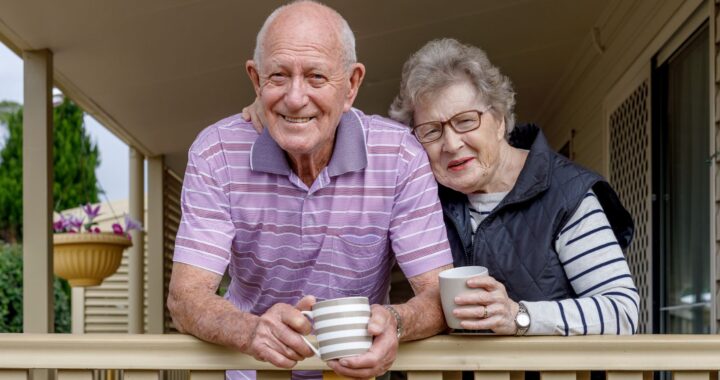
The New Wave Of Community Housing Transforming Mental Health Support
For decades, housing solutions for people living with complex mental health conditions sat in the background of broader conversations about care. They existed in some form, but too often they were underfunded, treated as stopgaps, or designed without listening to the people who would actually live there. The result was predictable — high turnover, instability, and communities that didn’t quite feel like home. That’s changing. Across the country, a new model of community housing is redefining what safe, stable living can mean for people in recovery. It’s grounded in dignity, shared purpose, and the understanding that a home isn’t just four walls and a roof. It’s a foundation for building a future.
A Shift From Shelter To Stability
The traditional approach to housing for people with ongoing mental health needs often focused on crisis relief. It was about finding a bed for tonight, maybe next week, and hoping that would be enough to prevent things from getting worse. But this new movement is flipping that idea on its head. Instead of temporary fixes, the focus is on permanent or long-term housing that integrates support, structure, and choice.
Residents aren’t expected to “fit” into rigid program requirements that don’t reflect their reality. The housing is shaped around them, not the other way around. Staff members are partners, not gatekeepers. They bring training not only in healthcare but in empathy, conflict resolution, and active listening. It’s about creating a place where someone can stay long enough to feel rooted, with the stability to plan ahead instead of constantly worrying about where they’ll be next month.
Part of this shift includes models like group homes for schizophrenics, which combine comfortable living environments with daily access to supportive resources. Done well, these spaces provide the consistency and respect people need to maintain their health while living richer, more independent lives.
Breaking Down The Walls Of Isolation
Living with a long-term mental health condition can create a kind of isolation that’s hard to describe unless you’ve experienced it. Friendships fade when everyday life becomes a series of careful adjustments to manage symptoms. Family relationships can grow strained. And when housing is unstable, even casual connections — a familiar cashier at the store, a neighbor you nod to — can vanish overnight.
Community housing programs are directly tackling this by weaving opportunities for connection into everyday life. These aren’t forced social activities. They’re spaces that naturally invite interaction — shared kitchens where people can cook together, gardens where residents swap tips about tomatoes, living rooms where a TV show turns into a group conversation.
When these housing projects open in neighborhoods, the ripple effect reaches beyond their walls. Local businesses often get involved, offering training or volunteer opportunities. Schools host art shows featuring residents’ work. The community stops seeing the housing as “other” and begins to see it as a part of the neighborhood’s life. That mutual visibility benefits everyone.
Design That Prioritizes Well-Being
Good design has more influence on mental health than most people realize. It’s not about expensive finishes or high-end appliances. It’s about crafting spaces that feel safe, calming, and human. In these housing models, every detail matters — the color of the walls, the placement of windows, the amount of natural light, even the acoustics that control how sound travels.
Architects and mental health professionals are collaborating to ensure that each space supports emotional health as much as physical needs. Quiet areas are balanced with inviting communal rooms, so residents can choose when to connect and when to recharge. Furniture is arranged to encourage conversation without forcing it. Hallways are wide enough to prevent that claustrophobic, institutional feeling.
It might sound small, but these choices directly influence the impact of mental health on daily life. A well-lit, peaceful bedroom can help someone sleep better. A cheerful kitchen can make cooking feel less like a chore. Comfortable, thoughtfully designed shared areas make people more likely to linger and talk — which, over time, builds trust and connection.
Support That Extends Beyond The Front Door
Housing is the foundation, but the support doesn’t end there. The best programs weave resources into the daily rhythm of life without overwhelming residents. Case managers might stop by regularly to check in. Mental health professionals might hold drop-in hours for anyone who wants to talk. Community partners — gyms, art studios, libraries — welcome residents as part of their ongoing activities.
Employment support is becoming a key part of this picture. Instead of pushing people toward whatever job is available, there’s a growing focus on helping them find roles that fit their strengths, interests, and capacity. This approach not only promotes financial independence but helps rebuild confidence — a vital step after years of instability or underemployment.
Some housing communities also offer workshops on practical skills: budgeting, healthy cooking, conflict resolution, or even navigating public transportation. They’re not mandatory; they’re there for when someone feels ready. That readiness matters because when people have control over their participation, they’re more likely to follow through.
Changing Perceptions, One Neighborhood At A Time
Perhaps one of the most powerful outcomes of these projects is the shift in public perception. For too long, housing for people with mental health conditions has been pushed to the outskirts, both physically and socially. But these new models place beautiful, functional homes in regular neighborhoods, breaking down stereotypes about what mental health housing looks like — and who it’s for.
Neighbors see residents gardening, walking dogs, heading to work. They’re not distant, invisible figures; they’re part of the community’s daily rhythm. And over time, that visibility erodes outdated assumptions. People begin to realize that mental health conditions are just one part of someone’s life, not the whole story.
These programs are also inspiring other cities to rethink their strategies. Municipal leaders are noticing the economic benefits — reduced emergency service calls, fewer hospital visits, and more residents contributing to local economies. But beyond the numbers, they’re seeing communities that feel more connected, inclusive, and compassionate.
Looking Ahead With Optimism
The movement toward community-based, supportive housing is still gaining momentum, but it’s already showing what’s possible when dignity, design, and care align. More municipalities are exploring partnerships with nonprofit organizations, local builders, and mental health advocates to replicate the model.
The potential here isn’t just about helping individuals live better — it’s about reshaping the way society thinks about mental health support entirely. Housing is no longer seen as the end point of recovery, but as the starting point for building stability, relationships, and a sense of belonging. And that’s a future worth working toward.






